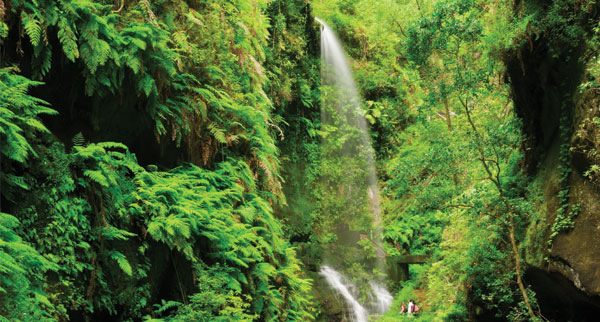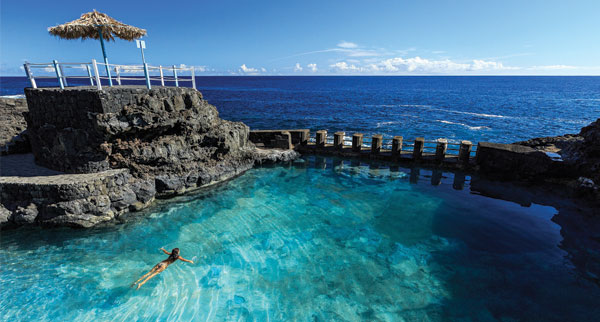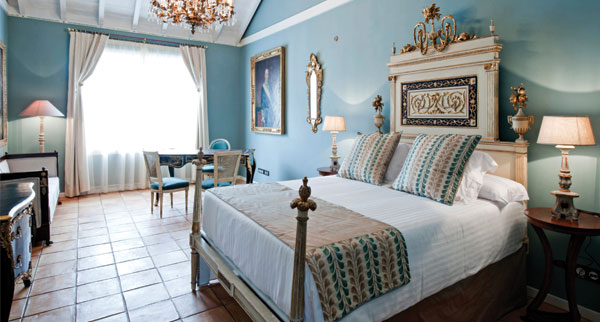Pictures: La Palma Tourist Board / dominicdahncke.com
From hiking by day to stargazing by night, low-key La Palma has more to offer than winter sun, writes Richard Mellor.
Like this and want more details? Click here to download and save as a PDF.
Even among Canary Islands specialists, La Palma is something of a secret. This despite the archipelago’s most northwesterly member boasting some serious assets: the Canaries’ densest greenery, a vast walking network, beautiful black-sand beaches and Europe’s best-rated stargazing.
‘La Isla Bonita’ has taken a step out of the shadows, courtesy of direct easyJet flights which began last winter and are coming back for a second season, so it should loom large this year for soft-adventurers seeking somewhere offbeat and less-frequented.

Sell: Stars and strides
Above all else, you go to La Palma for fantastic walking. Because its relatively tall peaks catch clouds, the fifth-largest Canary island is also the group’s most verdant member. Combine that lushness with caldera-rim miradors (viewpoints), laurel-forest gorges, black sand dunes and about 550 miles of paths, and you have hiking heaven.
The absence of much urbanisation enables terrific stargazing too. While Mount Teide on Tenerife tends to attract more column inches, the astral tourism is arguably better on La Palma. Its skies are protected from light pollution by law, and some of the world’s best telescopes reside atop Roque de los Muchachos.
You might well see Venus, but you’ll definitely spy a few volcanoes on La Palma. Superb museums explain the fissures, flag vents and more, but it’s the undeniable physical evidence – formations, chasms, craters and hills which weren’t there 50 years ago – that truly captivates.
Sports fans can enjoy downhill biking, dune-buggying, surfing, caving, canyoning and climbing. Rum and cigar production lend a Cuban flavour, while the two main, pretty towns – Santa Cruz and Los Llanos de Aridane – have excellent art scenes and daring restaurants.
Running from mid-September until late March, easyJet’s new service departs from Gatwick on Saturdays and Tuesdays. Thomson Airways charters the UK’s other direct flights, departing from Gatwick and Manchester on Thursdays year‑round, with an extra Sunday service from Manchester between November and April. Otherwise the quickest connections are via Madrid, taking seven hours.
La Palma is a year-round destination, so the best time to go partly depends on preference.
For stargazing, summer delivers the clearest skies; average temperatures then of 24C also suit beach-minded breaks, aided by slightly reduced prices, since that’s off-peak for the Canaries.
It’s mild in winter, though – February’s average is 18C – hence Inntravel’s new self-guided walking holidays operating from September until May. According to product manager James Keane, the most popular time is January to March, for winter sun. “However,” he adds, “Good weather and abundant spring flowers make April and May brilliant months to travel.”

See: From sea pools to salt pans
La Palma’s most famous walk is its Volcanoes Route, which surfs a dormant ridge of vents and cones for 14 miles along the island’s southern spine. Unfortunately, much of its greenery was scorched by last year’s wildfires, and is still recovering.
Yet its last section, from San Antonio volcano, remains unaffected. The eerie scenery here comprises noirish dunes and a huge plain covered in jagged basalt boulders. At Palma’s southern tip lies Fuencaliente, home to a lighthouse and rectangular salt pans gleaming white against the blackened ground.
Los Tilos, in the northeast, couldn’t be more different. Part of a World Biosphere Reserve, this laurel forest’s dense, tall trees line a misty gorge; fern fronds and spidery sunshine rays complete the enchanted, Lord of the Rings-type vibe. Hikes here conclude at hot springs atop the ravine.
Walkers can also venture on to the rim of Caldera de Taburiente, a six-mile-wide bowl ringed by cresting peaks. The most popular access is from La Cumbrecita’s car park: a steady, four-mile ascent of Pico Bejenado. Views of snow-capped mountains and their emerald-green sides are easily ample reward.
“The village of Carco Azul is best known for its seawater swimming pool – a deep basin protected from waves by a wall.”
At the summit of the highest Taburiente peak is the 2,420m-high Observatory of Roque de los Muchachos. A recent audit ranked its impressive fleet of telescopes behind only Hawaii’s Mauna Kea for sighting prowess in the northern hemisphere. Free English-language tours are available but must be booked a few weeks ahead.
La Palma initially rose from the Atlantic due to volcanic activity, and continues to be reshaped by eruptions, most recently in 1971. The best place to learn more, and see extraordinary footage, is the centre beside San Antonio volcano (entry €5). Displays are in English, and visitors can also amble around a circular crater.
Volcanoes can also take credit for creating La Palma’s distinctive beaches: their black sand is water‑softened lava. The one at Puerto Naos, halfway up the western coast, has Blue Flag status, plus relatively gentle waves, sunbeds, space and a palm-lined promenade dotted with restaurants. A few banana plantations to the north, boats depart from Puerto de Tazacorte for dolphin-watching and scuba diving.
Up in the northeast is the coastal village of Charco Azul, best known for its seawater swimming pool – a deep basin protected from waves by a wall, and ringed by diving points. Nearby, smaller, crab-happy rock-pools and restaurants add to the temptation – as does La Palma’s last-remaining rum distillery, Destilerías Aldea.
Hemmed in by steep cliffs, capital Santa Cruz is the island’s focal point. Cruises dock here, and main street Calle O’Daly – named after an Irish merchant – thrums seductively. Galleries and fashionable boutiques occupy handsome, multicoloured buildings, some with balconies built from fragrant tea pine.

Stay: Taking a side
The Palmero hotel scene ranges from a few larger, resort-style properties to heaps of two-star hotels and homely rural fincas.
The first decision to settle involves choosing sides. More average hours of sunlight, better beaches and a position for sunsets sees La Palma’s western flank lure most visitors; eastern advantages include airport proximity. But uniformly excellent roads mean clients will only ever be a few hours’ drive away from everywhere else. So west is generally best.
Best of all is 32-room Hacienda de Abajo, a former sugar-plantation estate outside Tazacorte and near the sea. “It’s by far our best-seller,” says Prestige Holidays marketing manager Nicky Shafe. “And it’s classified as the island’s sole ‘emblematic hotel’ thanks to its history.” The top-notch spa, fine-dining restaurant and pool among mazy tropical-plant gardens all help too.
Los Llanos’ nicest residence is Hotel Benahoare, centrally located and refurbished in 2016. Rooms are smart if small, and the boldly upholstered lobby and restaurant-bar makes a nice place to loiter or sip local craft beer.
At one end of Puerto Naos beach is four-star Sol La Palma, a glossy resort from the Meliá chain which headlines Thomson’s accommodation portfolio for La Palma. On site are five pools (three for children), wellness facilities, a kids’ club and tennis courts.
Following a similar formula is this isle’s sole all-inclusive property, set further southeast. There are some 625 rooms spread over La Palma & Teneguía Princess’s several low‑rise buildings, along with 11 pools – including one in the nudist area – and a large spa, but no decent beach.
Inland, several lovely farmhouses dot the verdant, fertile-soiled hills and provide a more intimate option. Prestige’s portfolio, for example, includes east-coast Finca Arminda, which boasts friendly owners, a pool and peaceful orchard gardens.
As well as a hotel-to-hotel itinerary, Inntravel alternatively offers a handpicked range of self-catering cottages; clients stay in just one or two. Thanks to its bell-chimney kitchen and handy airport proximity, Casa Carlota is the perennial favourite.
Top tip
For maps and information on La Palma’s main footpaths, go to: senderosdelapalma.es/en
Sample product
Prestige Holidays offers a seven-night stay with breakfast at Hotel Hacienda de Abajo including direct easyJet flights from Gatwick and private transfers, from £1,009, departing November 7.
prestigeholidays.co.uk
Inntravel offers a seven-night, hotel-to-hotel self-guided walking trip, including a stay at the Benahoare, from £715 in October and November, which covers accommodation, breakfast, six other meals, daily luggage transfers and route notes. Flights and transfers not included.
inntravel.co.uk




